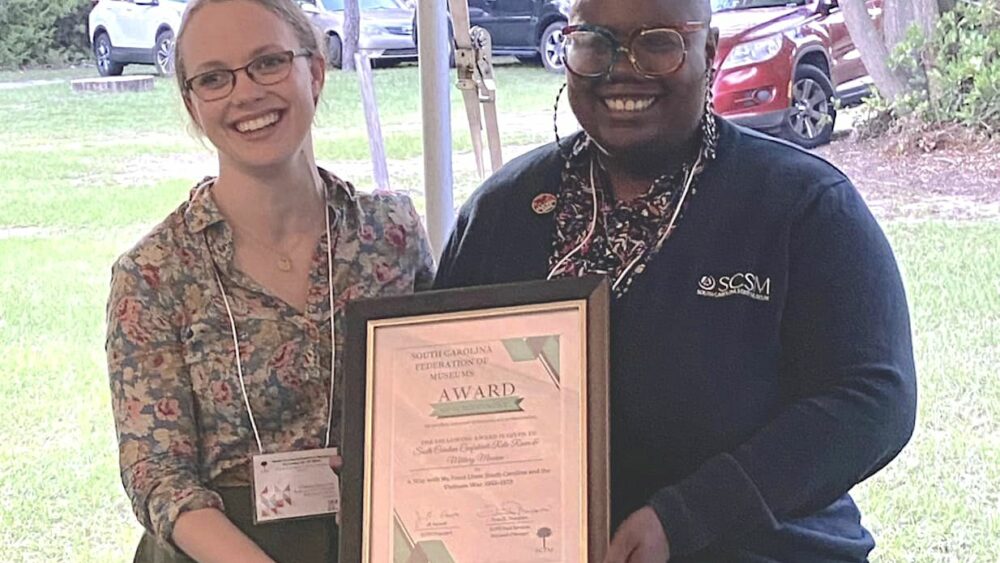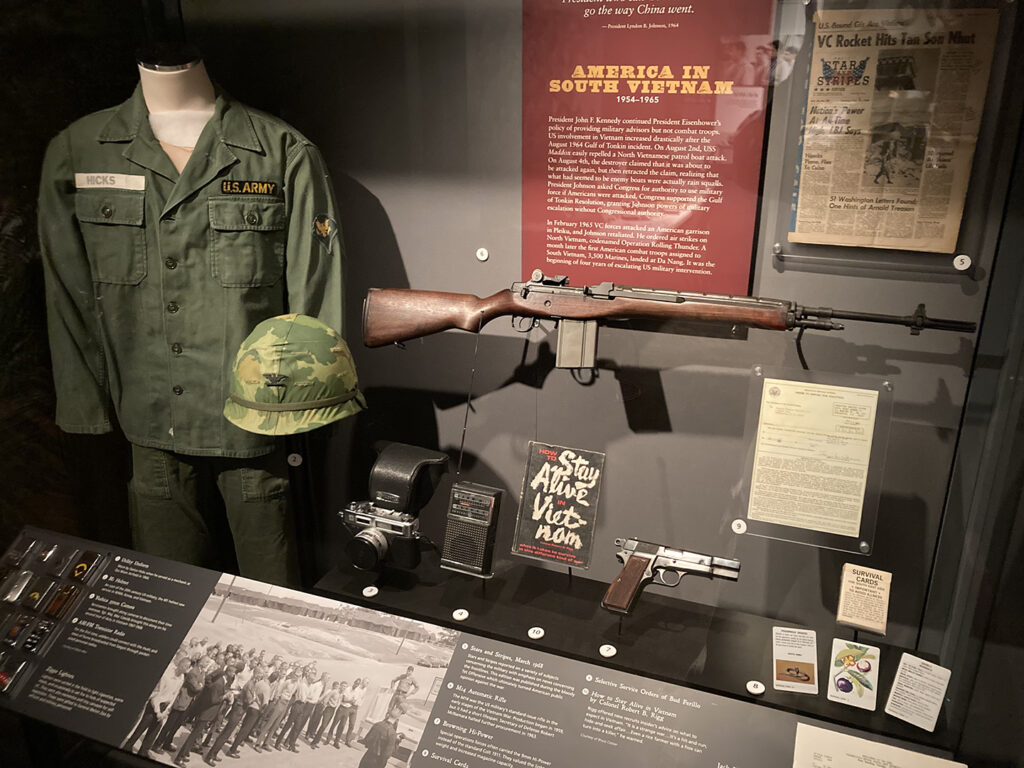We’ve told you again and again that the new Vietnam exhibit at the South Carolina Confederate Relic Room and Military Museum is something special. Now we have official affirmation of that viewpoint from the South Carolina Federation of Museums.
Last month, the federation gave the Relic Room its Award of Achievement for “A War With No Front Lines: South Carolina and the Vietnam War, 1965-1973,” a generational achievement that was years in the making, and opened last Veterans Day. Curator of Exhibits & Collections Chelsea Sigourney accepted the award on behalf of the Relic Room.
The federation is an organization that exists to sustain and support excellence in South Carolina museums. It works to strengthen professional standards and procedures by facilitating communication, inclusiveness, professionalism and sustainability through advocacy and promotion of our state’s museums.
The federation’s Award of Achievement is “awarded to museums in South Carolina that have presented an exhibit, program or publication, which demonstrates excellent utilization of the resources available to that institution.” The judging criteria include such questions as “How much did the project benefit the public?” The project had to have been completed in 2022.
Nominees for the award must be institutional members of SCFM in good standing and meet the IMLS definition of a museum. The Relic Room is one of 15 museums in South Carolina that are accredited by the American Alliance of Museums.
Founded in 1896, the museum focuses on South Carolina’s distinguished martial tradition through the Revolutionary War, Mexican War, Civil War, Spanish-American War, World Wars I and II, Vietnam, the War on Terror, and other American conflicts. It serves as the state’s military history museum by collecting, preserving, and exhibiting South Carolina’s military heritage from the colonial era to the present, and by providing superior educational experiences and programming.
The Vietnam exhibit represents a huge expansion of the museum’s recognition of the experiences of South Carolinians who served in that conflict. In creating this exhibit, the museum relied upon the great advantage offered by such a recent event – the fact so many of those veterans are still among us.
Few of them were treated like heroes when they returned – especially compared to the way their fathers had been in 1945. And not many folks back home wanted to hear their stories. But they hear them now. That’s the purpose of the sprawling new, 2,500-square-foot exhibit that fills the brick-lined space that was once the cistern of the first fully electric textile mill in the world, Columbia Mills.
The exhibit not only relates the history, but shows the uniforms our neighbors wore, the things they carried, and the weapons they fought with. Visitors can hear the veterans’ voices tell the tale, and familiarize themselves with the environments in which the veterans served – rice paddies, war-torn cities, the Highlands, the streams and swamps of the Mekong Delta, and the skies above.
This war in this one little country divided America. It changed Americans’ very concept of themselves – not only our ideas of how we should interact with the rest of the world, but how we related to each other at home, and especially to our government.
All that is reflected in this new exhibit. The context is given, the meaning is explained. But ultimately, the point is the stories of these veterans, and the physical items that go with those stories. Recently, the Relic Room’s executive director, Allen Roberson, told a newspaper reporter, “We don’t do politics. We let the artifacts tell the story.”
If you haven’t seen the exhibit, we urge you to do so…




Comments are closed.